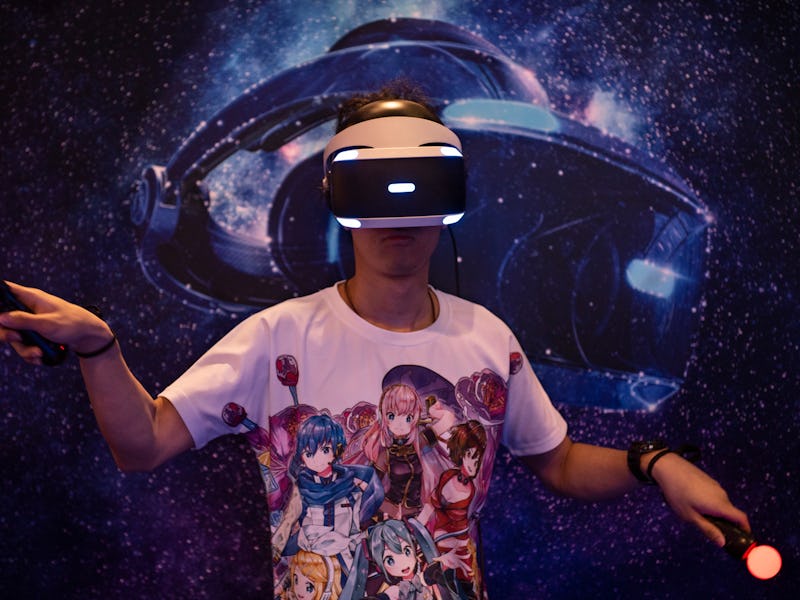New PS5 patent hints at an exciting trend for next-gen consoles
Soon, playing video games could become a totally bespoke experience.

Sony has been hinting that it will eventually release new virtual reality hardware to complement the release of the PlayStation 5 later this year. The company filed yet another patent giving gamers one more glimpse at the kind of next-generation features that could come with the rumored PSVR 2 equipment, and it's beginning to feel like Sony wants its next-gen console to offer a completely customized video game experience.
On Monday, Sony was granted a patent by the U.S. Patent and Trademark Office for a head-mounted display (HMD) that can detect the size of users’ pupils. The document goes on to say that data could be used to measure how engaged users are when they’re playing a VR game.
If this concept ever does make it to a future version of PSVR headset, it could be used to regulate certain aspects of VR games to customize titles to users’ bodily reactions. For example, when someone is scared, their pupils dilate, so if a gamers’ pupils are dilated for an extended period of time, it could be a sign that certain levels in horror titles should be toned down to keep them from being so terrified that they quit the game.
The conceptual method of how Sony's rumors PSVR 2 headset could detect pupil size and translate that into an engagement score.
On the other hand, if players’ eyes don’t dilate at all during a puzzle game, it could be a sign that it’s too easy and its difficulty should be increased to better engross the users. Here’s the patent document explaining this concept:
“An increased state of pupil dilation (widening of pupil) may indicate that an HMD user has a relatively higher level of engagement (e.g., attraction, interest, appeal, cognition, etc.) to VR content being presented by the HMD. Conversely ... a decrease or below expected state of pupil size (constriction or narrowing of pupil) may indicate that the HMD user has a relatively low level of engagement (e.g., boredom, repulsion, disaffection, etc.) to the VR content being presented to the HMD user”
Sony is clearly invested in tailor-fitting its hardware and software to all of its users. PS5 lead architect Mark Cerny revealed on March 18 that users might be able to submit pictures of their ears so the next-gen console’s Tempest 3D AudioTech can deliver an even more immersive auditory experience.
Previous PS5 patents have also shown that the company wants to embed both sweat and heart-rate sensors in the upcoming console’s controllers to deliver “biofeedback” or an in-game response to how frantically gamers are mashing the DualShock.
Sony’s next generation of gaming technology will seemingly focus a great deal on how well the technology can adapt to a specific gamer’s habits and preferences in a way that no one game console has ever done before. In other words, by incorporating Tempest 3D AudioTech with this VR patent and other technology, patented or otherwise, Sony seems primed to offer a totally customizable video game experience that (potentially) will be uniquely tailored to each gamer.
Whether or not the Xbox Series X can deliver something similar remains to be seen, but incorporating new tech like this feels inevitable for video games as an industry — who knew it would happen so soon?
Sony's PlayStation 5 will be released later in 2020.